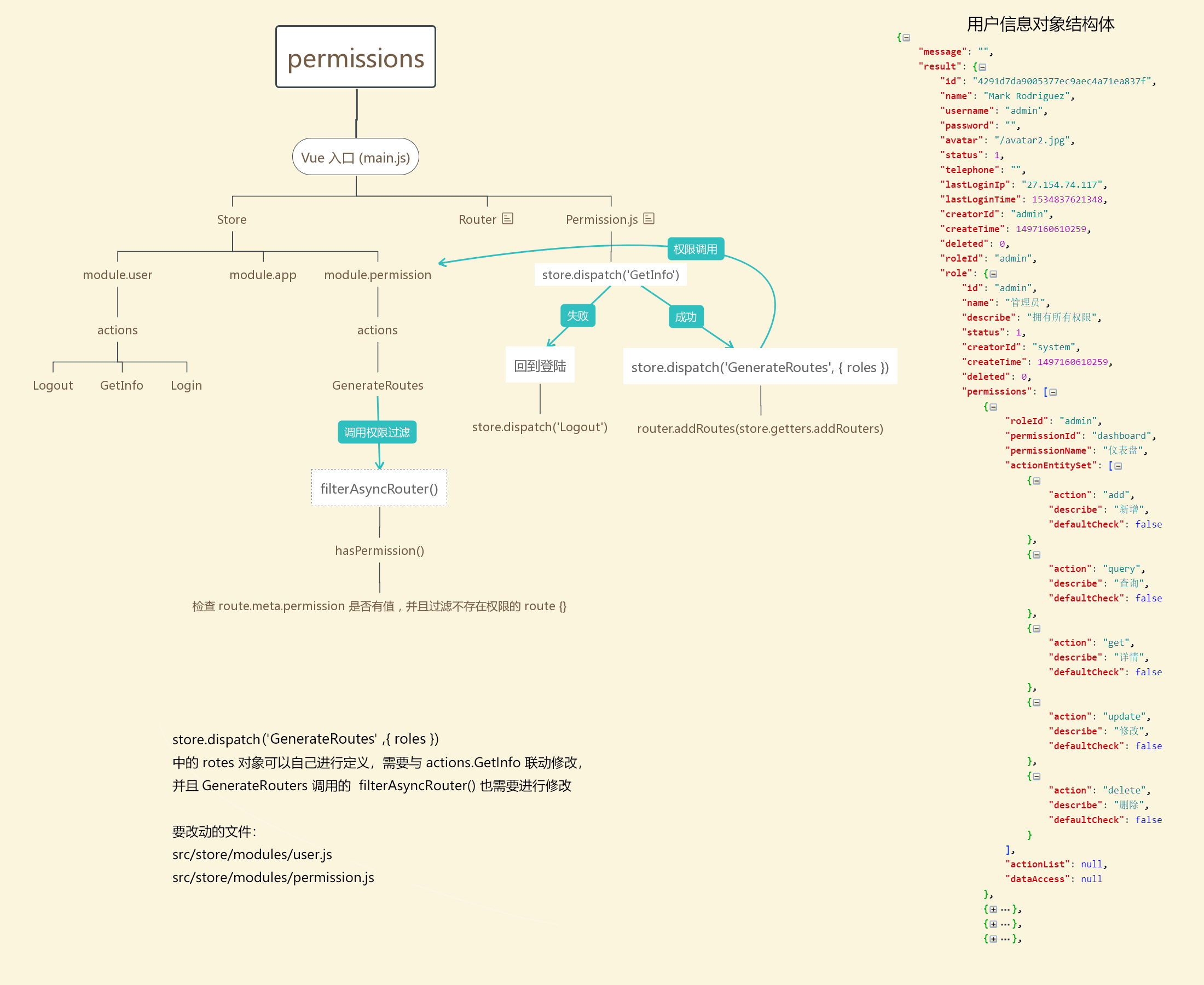|
|
1 год назад | |
|---|---|---|
| .. | ||
| README.md | 1 год назад | |
| generator-routers.js | 1 год назад | |
| index.js | 1 год назад | |
README.md
路由/菜单说明
格式和说明
```ecmascript 6 const routerObject = { redirect: noredirect, name: 'router-name', hidden: true, meta: {
title: 'title',
icon: 'a-icon',
target: '_blank|_self|_top|_parent',
keepAlive: true,
hiddenHeaderContent: true,
} }
`{ Route }` 对象
| 参数 | 说明 | 类型 | 默认值 |
| -------- | ----------------------------------------- | ------- | ------ |
| hidden | 控制路由是否显示在 sidebar | boolean | false |
| redirect | 重定向地址, 访问这个路由时,自定进行重定向 | string | - |
| name | 路由名称, 必须设置,且不能重名 | string | - |
| meta | 路由元信息(路由附带扩展信息) | object | {} |
| hideChildrenInMenu | 强制菜单显示为Item而不是SubItem(配合 meta.hidden) | boolean | - |
`{ Meta }` 路由元信息对象
| 参数 | 说明 | 类型 | 默认值 |
| ------------------- | ------------------------------------------------------------ | ------- | ------ |
| title | 路由标题, 用于显示面包屑, 页面标题 *推荐设置 | string | - |
| icon | 路由在 menu 上显示的图标 | [string,svg] | - |
| keepAlive | 缓存该路由 | boolean | false |
| target | 菜单链接跳转目标(参考 html a 标记) | string | - |
| hidden | 配合`hideChildrenInMenu`使用,用于隐藏菜单时,提供递归到父菜单显示 选中菜单项_(可参考 个人页 配置方式)_ | boolean | false |
| hiddenHeaderContent | *特殊 隐藏 [PageHeader](https://github.com/vueComponent/ant-design-vue-pro/blob/master/src/components/PageHeader/PageHeader.vue#L6) 组件中的页面带的 面包屑和页面标题栏 | boolean | false |
| permission | 与项目提供的权限拦截匹配的权限,如果不匹配,则会被禁止访问该路由页面 | array | [] |
> 路由自定义 `Icon` 请引入自定义 `svg` Icon 文件,然后传递给路由的 `meta.icon` 参数即可
路由构建例子方案1
路由例子
----
```ecmascript 6
const asyncRouterMap = [
{
path: '/',
name: 'index',
component: BasicLayout,
meta: { title: '工作台' },
redirect: '/dashboard/analysis',
children: [
{
path: '/dashboard',
component: RouteView,
name: 'dashboard',
redirect: '/dashboard/workplace',
meta: {title: '仪表盘', icon: 'dashboard', permission: ['dashboard']},
children: [
{
path: '/dashboard/analysis',
name: 'Analysis',
component: () => import('@/views/dashboard/Analysis'),
meta: {title: '分析页', permission: ['dashboard']}
},
{
path: '/dashboard/monitor',
name: 'Monitor',
hidden: true,
component: () => import('@/views/dashboard/Monitor'),
meta: {title: '监控页', permission: ['dashboard']}
},
{
path: '/dashboard/workplace',
name: 'Workplace',
component: () => import('@/views/dashboard/Workplace'),
meta: {title: '工作台', permission: ['dashboard']}
}
]
},
// result
{
path: '/result',
name: 'result',
component: PageView,
redirect: '/result/success',
meta: { title: '结果页', icon: 'check-circle-o', permission: [ 'result' ] },
children: [
{
path: '/result/success',
name: 'ResultSuccess',
component: () => import(/* webpackChunkName: "result" */ '@/views/result/Success'),
// 该页面隐藏面包屑和页面标题栏
meta: { title: '成功', hiddenHeaderContent: true, permission: [ 'result' ] }
},
{
path: '/result/fail',
name: 'ResultFail',
component: () => import(/* webpackChunkName: "result" */ '@/views/result/Error'),
// 该页面隐藏面包屑和页面标题栏
meta: { title: '失败', hiddenHeaderContent: true, permission: [ 'result' ] }
}
]
},
...
]
},
]
- 请注意
component: () => import('..')方式引入路由的页面组件为 懒加载模式。具体可以看 Vue 官方文档- 增加新的路由应该增加在 '/' (index) 路由的
children内- 子路由的父级路由必须有
router-view才能让子路由渲染出来,请仔细查阅 vue-router 文档permission可以进行自定义修改,只需要对这个模块进行自定义修改即可 src/store/modules/permission.js#L10
附权限路由结构:
第二种前端路由由后端动态生成的设计,可以前往官网文档 https://pro.antdv.com/docs/authority-management 参考
